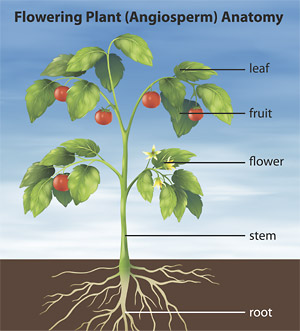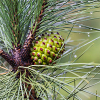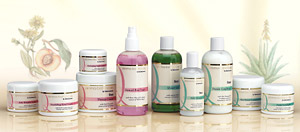Plant Parts And Essential Oils
 Many essential oils are derived from plants, and the oils produced naturally in these living organisms are largely what provide their amazing healing powers.
Many essential oils are derived from plants, and the oils produced naturally in these living organisms are largely what provide their amazing healing powers.
Since the dawn of time plants have been used medicinally to treat multiple ailments, and they obviously work extremely well as healing agents since the human race has survived everything nature has thrown at us.
But since the introduction of modern drugs in the early 1900’s their use for medicinal uses has dwindled dramatically.
However, due to the increasing number of side-effects when using modern pharmaceutical drugs, more people are once again turning to natural ways of improving their health and wellbeing. The interest in medicinal plants has increased enormously over the past twenty years, and this has fuelled the continuing interest in aromatherapy.
In my opinion, to really understand essential oils it pays to be able to identify the individual parts of plants they are actually derived from. This can help you understand how the plant works and lead to a better understanding of the therapeutics of essential oils.
The life span of plants
The life span of plant species varies and this affects how plants bloom. Annual flowering plants live for one year only, fulfilling their entire life cycle from seed to flower to seed within a single growing season. Only the dormant seed continues life between one generation and the next.
Biennial plants take two years to complete their life cycle, producing only a small rosette of leaves near the soil surface during the first year, and flowering in the second before it dies.
Perennial plants, which are either evergreen (never lose leaves) or deciduous (lose leaves in autumn) survive for many growing seasons. Typically only the top part of the plant dies during the winter, and then regenerates again in spring.
Interestingly, some plants can behave as either an annual or a perennial depending on the altitude, geographical location, soil conditions, and climate the plant is growing in.
Plant parts
Medicinal plants generally consist of flowers, fruits, seeds, leaves, and roots, all of which may contain essential oil. While not all plants flower, several of those commonly used as a source of essential oils do, such as all chamomiles, clary sage, helichrysum, lavender, and rose. Flowers are made up of petals, the calyx (the outer leaves), the stamen (this is where the pollen is located) and the pistil (this contains the ovary, the style and the stigma of the flower).
The seed of the plant contains a nucleus and a fruit. The latter can take many different forms, including a follicule, legume, cone, achenium, drupe, capsule, caryopsis, cremocarp, nut, berry, samara, pome or silique. Essential oils are extracted from both fruits (black pepper) and seeds (angelica). Confusingly to those without botanical training, what we commonly refer to as seeds are often actually fruits, such as with fennel.
All flowering plants will also contain stems, which grow towards the air and light. Stems are all different and some plants have stems that are actually underground. Herbs, for example, have stems that die after flowering. Generally the stem isn’t used in the production of essential oils, but it is still a very important part of a plant.
The root is the part of a plant that we usually can’t see as it is located deep in the soil, and there are several different types of root. A fusiform root tapers both up and down, and a fasciculated root has thick fibres or branches. A tuberiferous root develops roots and branches that become rounded knobs, such as with the potato.
There is also the aerial root that grows in open air, the conical root, where the root tapers from the crown to the apex of the plant, napiform root which is swollen at the base and largely horizontally extended, and the rhizome root that is a thick spreading root such as can be seen with ginger. Other examples of essential oils derived from roots include angelica, spikenard and vetiver.
Some plants even provide essential oil from more than one part of the plant. In these instances the extracted oil from one part may exhibit quite different therapeutic properties from oil derived from another, – or it simply may be more effective.
For example, the essential oils obtained from the bitter orange tree include neroli from the flowers, petitgrain from its leaves and twigs, plus bitter orange oil from the rind of the fruit. Each of these essential oils has different therapeutic qualities. Angelica root essential oil is considered superior to the oil distilled from the seeds, and tends to be the one used most in aromatherapy.
For a comprehensive list of plant parts that essential oils are derived from, see our essential oil specifications page.
Copyright © Quinessence Aromatherapy Ltd 2014. Written by Geoff Lyth



















 Spring Skincare Tips Switch to a Lighter Moisturiser Winter calls for heavy […]
Spring Skincare Tips Switch to a Lighter Moisturiser Winter calls for heavy […]










